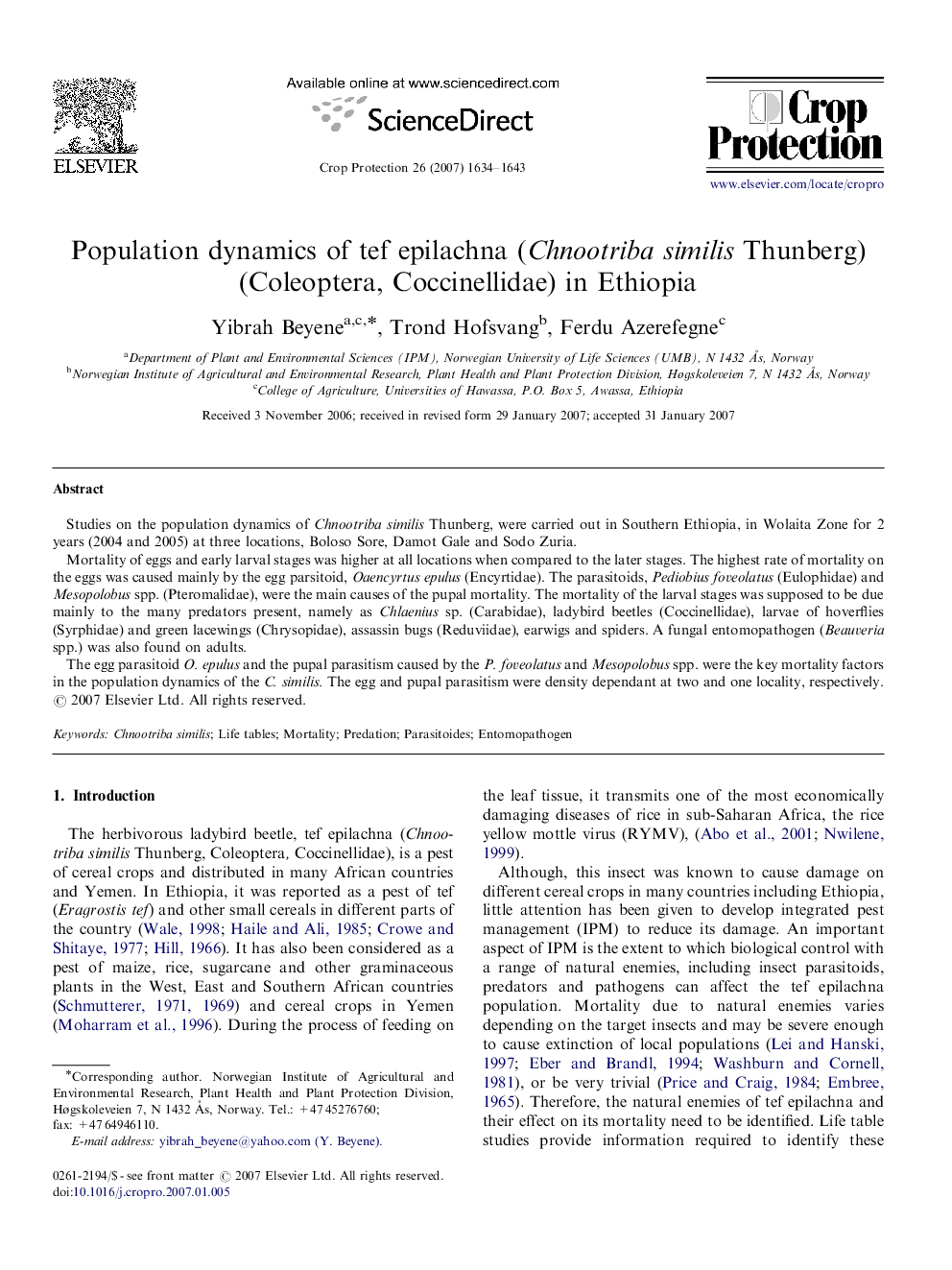| Article ID | Journal | Published Year | Pages | File Type |
|---|---|---|---|---|
| 4507029 | Crop Protection | 2007 | 10 Pages |
Studies on the population dynamics of Chnootriba similis Thunberg, were carried out in Southern Ethiopia, in Wolaita Zone for 2 years (2004 and 2005) at three locations, Boloso Sore, Damot Gale and Sodo Zuria.Mortality of eggs and early larval stages was higher at all locations when compared to the later stages. The highest rate of mortality on the eggs was caused mainly by the egg parsitoid, Oaencyrtus epulus (Encyrtidae). The parasitoids, Pediobius foveolatus (Eulophidae) and Mesopolobus spp. (Pteromalidae), were the main causes of the pupal mortality. The mortality of the larval stages was supposed to be due mainly to the many predators present, namely as Chlaenius sp. (Carabidae), ladybird beetles (Coccinellidae), larvae of hoverflies (Syrphidae) and green lacewings (Chrysopidae), assassin bugs (Reduviidae), earwigs and spiders. A fungal entomopathogen (Beauveria spp.) was also found on adults.The egg parasitoid O. epulus and the pupal parasitism caused by the P. foveolatus and Mesopolobus spp. were the key mortality factors in the population dynamics of the C. similis. The egg and pupal parasitism were density dependant at two and one locality, respectively.
